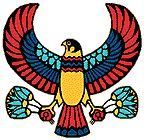"Oh my God, we're back! "


Evelyn Carnahan in the
1999 remake of "The Mummy"
Hamunaptra - City of the Dead - Page 2
You don't have to look too hard to find the inspirations for Imhotep's funeral trappings, a little walk into the British Museum will give you a few suprises. The black wooden coffin which he spent 3000 years in is a copy of a design much used. The one below is of Sezebek who is in the British Museum.
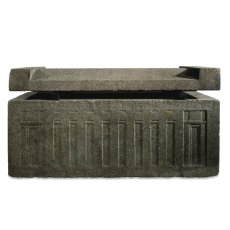
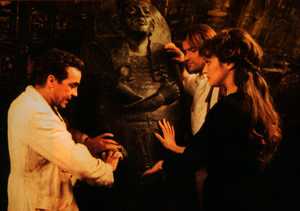
"I'm all tears,
shall we see who's inside?"
Jonathan
When I was in the BM a few months ago looking around I was a bit confused to walk into the object you can see above. It is a 5th Dynasty red granite sarcophagus in the shape of a house and very popular apparently with the Egyptian dead. Thankfully it didn't fall on me from the ceiling but it has much the same shape as the one which did in the film.....
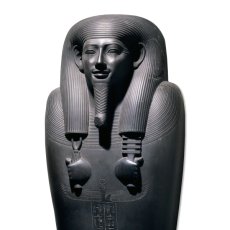

And now a little bit about scarabs. No, they don't eat flesh or chase you about, they are very small, live very quiet solitary lives and eat dung for a living!
The picture (right) shows, behind Evy and O'connell, the scarab on the wall of Hamunaptra with it's wings open and pushing the sun.
Below you will see King Tutankamen's scarab, and some of the little scarabs I've used all over their pages. They are somewhat like the one in the picture above and if you have a look at the people pages on this site you'll see Tut's scarab it is actually the hieroglyphic for his throne name
Neb-kepheru-ra
Real scarabs roll balls of dung about both to eat and to lay their eggs in, the Egyptians equated that with their god Kephri who had a head in the shape of the insect and was supposed to roll the sun across the sky each day.
Scarabs made of many different substances (glass, crystal, gold etc) were buried with mummies to ensure their renewed life in the after life and were supposed to protect the heart. There is a scarab in the shape of a heart in the British Museum along with many others which were found in tombs and during excavations.....

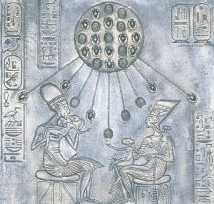

And finally that bit of wall which Jonathan pulled the scarab out of (left) and the carving which gave the designers their ideas(right). The real inscription comes from El Armana which is the modern name for the city built by Akhenaten aka Amenhotep aka Amenophis (see my people pages) who was the father of the real Ankh-en-es-amen the wife of Tutankhamen who was used as the influence for Ankh in the original film and the remake.
The carving should not be about in Seti's reign, after Ankhenaten became known as the great blasphemer when he tried monotheism out in Egypt and it failed all his images and statues were destroyed. On the other hand they might just have forgotten about it as it was lost in the tunnels underground and the removal party may not have got to it...

